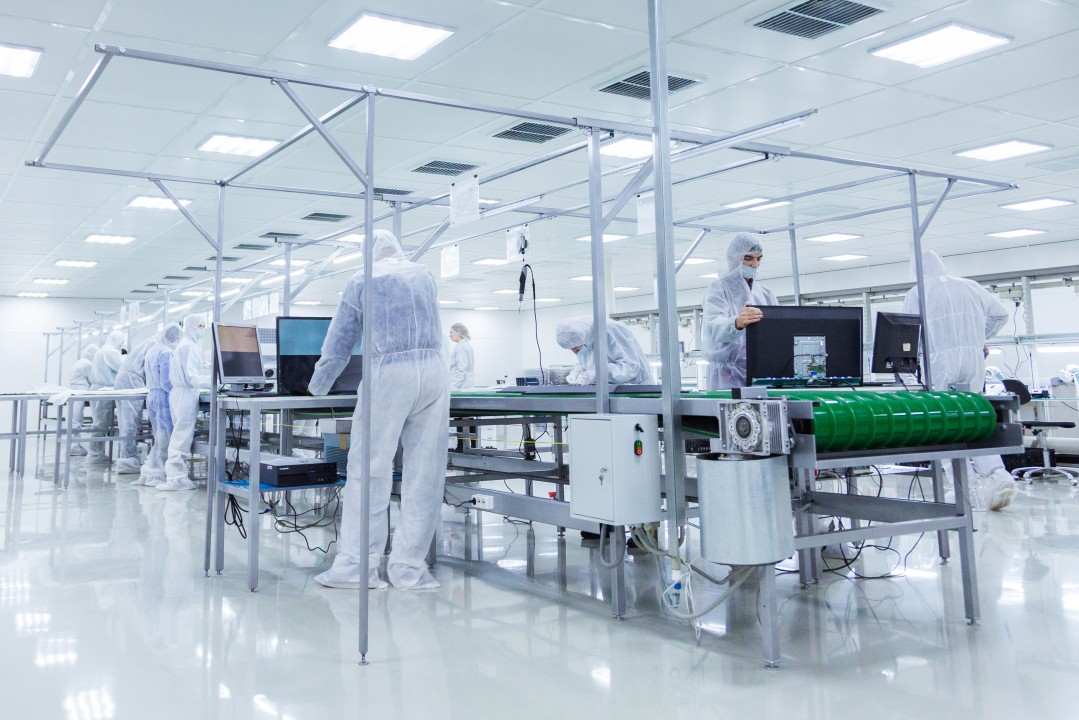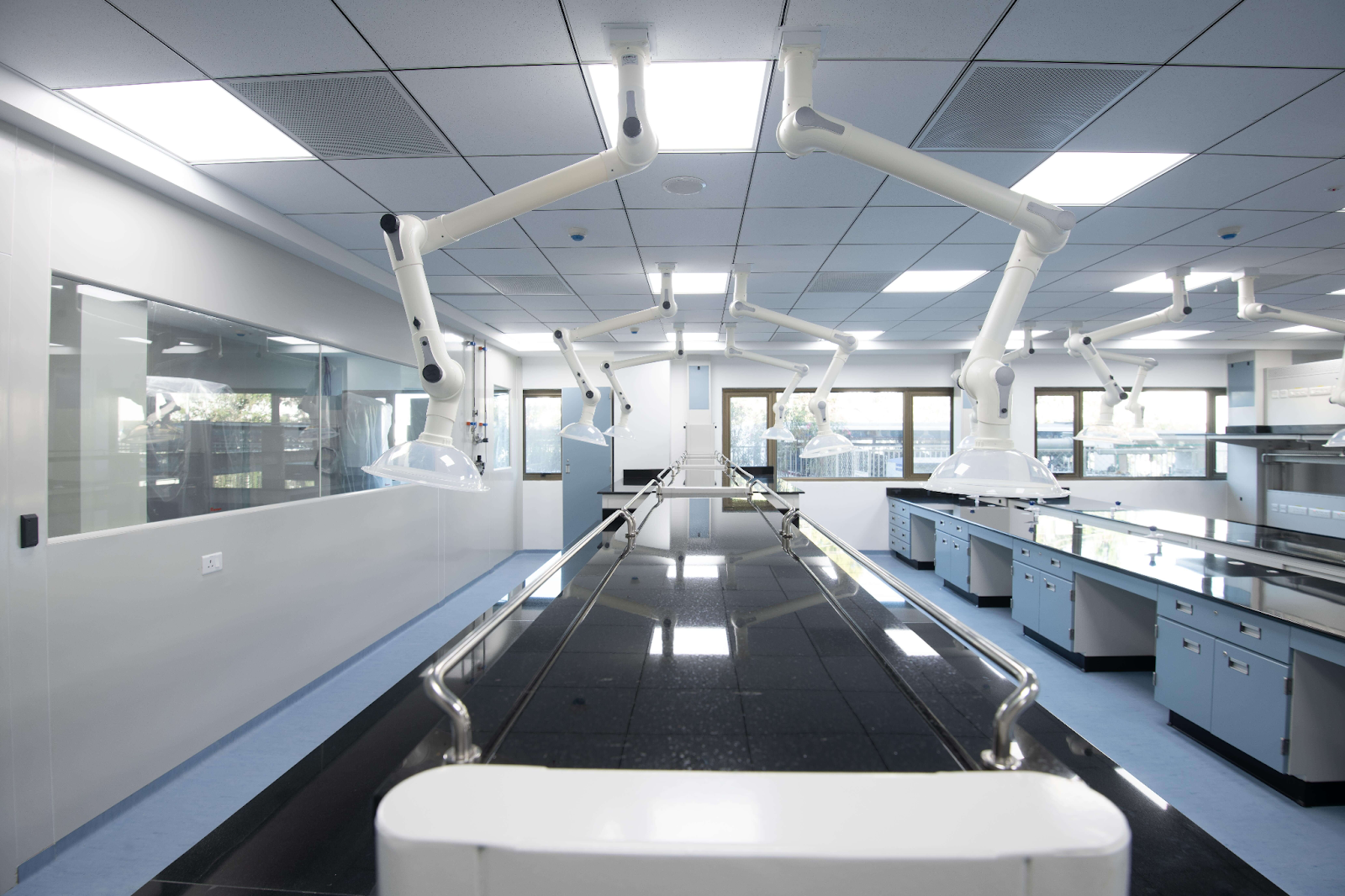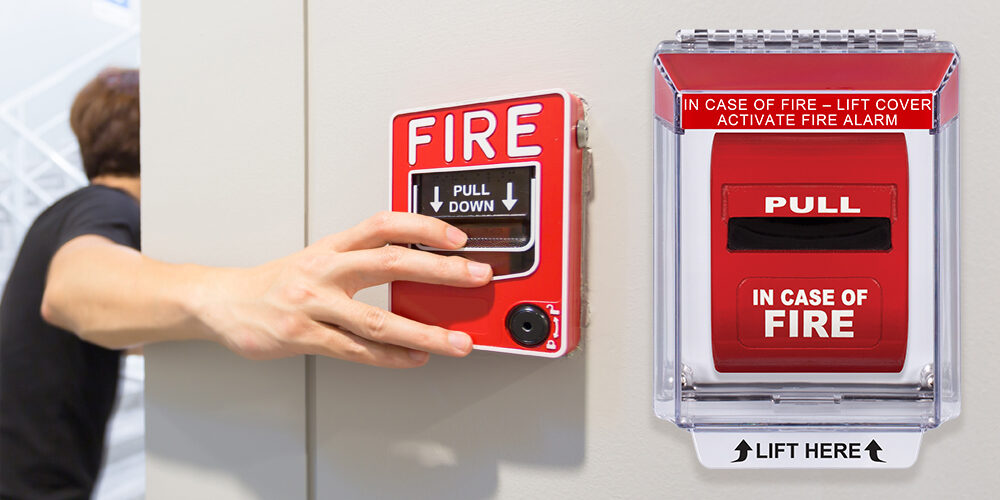HVAC considerations by lab type

The Vital Role of HVAC Systems in Laboratory Environments

In the realm of scientific research and development, laboratories serve as the bedrock of innovation, where groundbreaking discoveries and technological advancements are nurtured. These specialized environments demand meticulous control over various parameters, including temperature, humidity, air quality, and pressure, to ensure the integrity and reproducibility of experiments. Among these critical factors, the role of Heating, Ventilation, and Air Conditioning (HVAC) systems cannot be overstated. HVAC systems are the lifeblood of laboratories, providing the essential environmental conditions that enable scientists to conduct their work with precision and accuracy.
The importance of HVAC systems in laboratories extends far beyond mere comfort. These systems play a pivotal role in safeguarding the health and safety of researchers, protecting sensitive equipment and samples, and ensuring the reliability of experimental results. A well-designed and maintained HVAC system is a cornerstone of a successful laboratory operation, contributing directly to the quality of research and the overall efficiency of the facility.
The intricate interplay between HVAC systems and laboratory operations necessitates a comprehensive understanding of the unique requirements of different types of laboratories. From the controlled environments of pharmaceutical research facilities to the demanding conditions of high-throughput screening laboratories, each type of laboratory presents its own set of HVAC challenges and considerations. This article delves into the specific HVAC considerations for various laboratory types, providing insights into the critical factors that influence system design, operation, and maintenance.
By exploring the nuances of HVAC systems in different laboratory settings, we aim to shed light on the crucial role these systems play in ensuring the success of scientific endeavors. This knowledge will empower laboratory professionals, project managers, procurement managers, and C-suites in the scientific industry to make informed decisions regarding HVAC system design, implementation, and ongoing management, ultimately contributing to the advancement of scientific research and innovation.
The following sections will delve into the specific HVAC considerations for various laboratory types, including:
- Pharmaceutical Laboratories: These facilities require stringent temperature and humidity control to maintain the stability and efficacy of sensitive pharmaceutical compounds.
- Biotechnology Laboratories: The handling of biological samples and cell cultures necessitates precise temperature and humidity control, as well as air filtration to prevent contamination.
- Chemical Laboratories: The presence of volatile chemicals and hazardous materials demands specialized ventilation systems to ensure the safety of researchers and the environment.
- Research and Development Laboratories: These laboratories often house a wide range of equipment and experiments, requiring flexible HVAC systems that can adapt to changing needs.
- Clinical Laboratories: The analysis of patient samples requires controlled environments to maintain the integrity of tests and ensure accurate results.
By examining the unique HVAC requirements of each laboratory type, we will gain a deeper understanding of the critical factors that influence system design, operation, and maintenance. This knowledge will empower laboratory professionals to optimize their HVAC systems for optimal performance, ensuring the safety, efficiency, and success of their research endeavors.
HVAC Considerations by Lab Type
The efficient operation of a laboratory hinges on a multitude of factors, with environmental control playing a pivotal role. Among these, HVAC systems stand out as a critical component, directly impacting the accuracy and reliability of research, testing, and analysis. The intricate interplay between lab type, specific requirements, and HVAC design necessitates a comprehensive understanding of the unique challenges and solutions for each scientific discipline. This article delves into the nuances of HVAC considerations for various lab types, providing insights into the optimal design and operation of these essential systems.
The Importance of HVAC in Laboratories
HVAC systems are not merely about maintaining comfortable temperatures; they are the backbone of a controlled environment that ensures the integrity of scientific processes. In laboratories, HVAC systems play a crucial role in:
- Temperature and Humidity Control: Maintaining precise temperature and humidity levels is paramount for many experiments and analyses. Fluctuations can affect chemical reactions, biological processes, and the accuracy of instruments. HVAC systems provide the necessary control to ensure consistent and stable conditions.
- Air Quality Management: Laboratories often handle hazardous materials, volatile chemicals, and biological agents. HVAC systems with appropriate filtration and ventilation mechanisms are essential for removing contaminants, preventing cross-contamination, and safeguarding the health of personnel.
- Pressure Control: Maintaining specific pressure differentials between rooms is crucial in certain labs, such as those handling infectious agents or radioactive materials. HVAC systems can create positive or negative pressure environments to prevent the escape of hazardous substances.
- Energy Efficiency: Laboratories are often energy-intensive facilities. Well-designed HVAC systems can optimize energy consumption, reducing operating costs and minimizing environmental impact.
HVAC Considerations by Lab Type

The specific HVAC requirements vary significantly depending on the type of laboratory. Here, we explore the unique considerations for different lab types:
1. Chemical Laboratories
Chemical laboratories often handle volatile and corrosive chemicals that require specialized HVAC systems. Key considerations include:
- Fume Hoods: Fume hoods are essential for containing hazardous fumes and vapors. They should be properly designed and maintained to ensure effective ventilation and minimize exposure to personnel.
- Exhaust Systems: Exhaust systems are crucial for removing chemical vapors and gases from the laboratory. They should be designed to handle the specific types of chemicals used and to prevent the release of contaminants into the surrounding environment.
- Fire Suppression Systems: Chemical laboratories pose a fire hazard due to the presence of flammable materials. Fire suppression systems, such as sprinkler systems or fire extinguishers, should be installed and regularly inspected.
- Temperature and Humidity Control: While temperature and humidity control may not be as critical as in other lab types, it is still important to maintain a stable environment to prevent the degradation of chemicals and materials.
2. Biological Laboratories
Biological laboratories work with living organisms, including bacteria, viruses, and cell cultures. HVAC systems in these labs must be designed to prevent the spread of pathogens and maintain aseptic conditions.
- Air Filtration: High-efficiency particulate air (HEPA) filters are essential for removing airborne microorganisms and preventing contamination. HVAC systems should be equipped with HEPA filters in both supply and exhaust air streams.
- Pressure Control: Biological labs often require negative pressure environments to prevent the escape of pathogens. HVAC systems should be designed to maintain a slight negative pressure relative to surrounding areas.
- UV Germicidal Irradiation: UV germicidal lamps can be used to disinfect air and surfaces, reducing the risk of microbial contamination. These lamps should be installed in strategic locations within the lab.
- Temperature and Humidity Control: Temperature and humidity control are crucial for maintaining the viability of cell cultures and other biological samples. HVAC systems should be designed to provide precise control over these parameters.
3. Pharmaceutical Laboratories
Pharmaceutical laboratories are involved in the development, manufacturing, and testing of drugs and other pharmaceutical products. HVAC systems in these labs must meet stringent regulatory requirements and ensure product quality.
- Cleanroom Design: Pharmaceutical labs often incorporate cleanrooms to minimize contamination during drug manufacturing and testing. HVAC systems in cleanrooms must be designed to provide highly filtered air and maintain specific temperature and humidity levels.
- Airflow Control: Airflow patterns in cleanrooms are critical for preventing contamination. HVAC systems should be designed to create unidirectional airflow, ensuring that air flows from clean areas to less clean areas.
- Particle Control: Pharmaceutical manufacturing processes require strict control over airborne particles. HVAC systems should be equipped with HEPA filters and other particle removal technologies to minimize the presence of particles in the air.
- Temperature and Humidity Control: Temperature and humidity control are essential for maintaining the stability and quality of pharmaceutical products. HVAC systems should be designed to provide precise control over these parameters.
4. Research Laboratories
Research laboratories encompass a wide range of scientific disciplines, each with its own unique HVAC requirements. General considerations for research labs include:
- Flexibility: Research labs often require flexibility to accommodate changing research needs. HVAC systems should be designed to allow for easy adjustments to temperature, humidity, and airflow patterns.
- Energy Efficiency: Research labs are often energy-intensive facilities. HVAC systems should be designed to optimize energy consumption, reducing operating costs and minimizing environmental impact.
- Noise Control: Research labs often house sensitive equipment that can be affected by noise. HVAC systems should be designed to minimize noise levels, ensuring a quiet and conducive research environment.
- Safety: Research labs may handle hazardous materials or conduct experiments that pose safety risks. HVAC systems should be designed to ensure the safety of personnel and the environment.
5. Clinical Laboratories
Clinical laboratories perform diagnostic testing on patient samples, requiring a high level of accuracy and reliability. HVAC systems in these labs must ensure the integrity of test results and the safety of personnel.
- Temperature and Humidity Control: Clinical labs often handle temperature-sensitive samples, such as blood and tissue. HVAC systems should be designed to maintain precise temperature and humidity levels to prevent sample degradation.
- Air Filtration: Clinical labs must prevent the spread of infectious agents. HVAC systems should be equipped with HEPA filters to remove airborne microorganisms and minimize the risk of contamination.
- Pressure Control: Clinical labs may handle infectious materials, requiring negative pressure environments to prevent the escape of pathogens. HVAC systems should be designed to maintain a slight negative pressure relative to surrounding areas.
- Safety: Clinical labs must ensure the safety of personnel handling patient samples. HVAC systems should be designed to minimize the risk of exposure to hazardous materials.
HVAC System Design and Operation
The design and operation of HVAC systems in laboratories are critical for ensuring optimal performance and meeting specific requirements. Key considerations include:
- System Capacity: The HVAC system must be sized appropriately to handle the heat load and ventilation requirements of the laboratory. Oversized systems can be inefficient, while undersized systems may not be able to maintain the desired environmental conditions.
- Air Filtration: Appropriate air filtration is essential for removing contaminants and maintaining air quality. HEPA filters are commonly used in laboratories, but the specific type and efficiency of filters will depend on the lab type and the types of contaminants present.
- Ventilation: Ventilation rates should be sufficient to remove contaminants and maintain a comfortable environment. The ventilation system should be designed to minimize drafts and ensure even air distribution.
- Temperature and Humidity Control: Temperature and humidity control systems should be accurate and reliable. The system should be able to maintain the desired setpoints within a narrow range.
- Pressure Control: Pressure control systems should be designed to maintain the desired pressure differentials between rooms. The system should be able to respond quickly to changes in pressure and maintain the desired setpoints.
- Energy Efficiency: HVAC systems should be designed to minimize energy consumption. This can be achieved through the use of energy-efficient equipment, optimized system operation, and building envelope improvements.
- Maintenance and Monitoring: Regular maintenance and monitoring are essential for ensuring the proper operation of HVAC systems. This includes filter changes, equipment inspections, and system performance monitoring.
Conclusion
HVAC systems are an integral part of laboratory infrastructure, playing a critical role in maintaining a controlled environment that supports scientific research, testing, and analysis. The specific HVAC requirements vary significantly depending on the type of laboratory, with considerations for temperature and humidity control, air quality management, pressure control, and energy efficiency. By understanding the unique challenges and solutions for each lab type, laboratory managers can ensure that their HVAC systems are properly designed, operated, and maintained to support the highest levels of scientific rigor and safety.
Optimizing HVAC for Lab Success: A Recap
The intricate dance between laboratory operations and HVAC systems is a delicate one, requiring careful consideration and meticulous execution. This article has delved into the unique HVAC needs of various lab types, highlighting the critical role of temperature, humidity, and air quality control in ensuring accurate and reliable scientific research. From the meticulous control of temperature and humidity in pharmaceutical labs to the stringent air filtration requirements in biosafety labs, each lab type demands a tailored HVAC approach.
We've explored the importance of understanding the specific requirements of each lab type, emphasizing the need for a comprehensive assessment of factors such as sample sensitivity, equipment operation, and potential hazards. This assessment forms the foundation for designing an HVAC system that effectively mitigates risks, optimizes performance, and safeguards both personnel and the environment.
The article has also shed light on the crucial role of proper ventilation in maintaining a safe and productive lab environment. We've discussed the importance of adequate air exchange rates, the use of fume hoods and other specialized ventilation systems, and the need for regular maintenance to ensure optimal performance. By understanding the principles of ventilation and implementing appropriate measures, labs can effectively control airborne contaminants, minimize the risk of exposure, and create a healthier and more productive work environment.
Beyond the technical aspects, we've also emphasized the importance of collaboration and communication in optimizing HVAC for lab success. Effective communication between lab personnel, HVAC engineers, and facility managers is essential for ensuring that the HVAC system meets the specific needs of the lab and aligns with the overall goals of the research program. This collaborative approach fosters a shared understanding of the challenges and opportunities, leading to more efficient and effective HVAC solutions.
In conclusion, optimizing HVAC for lab success is a multifaceted endeavor that requires a deep understanding of the unique requirements of each lab type, the principles of ventilation, and the importance of collaboration. By implementing the strategies outlined in this article, labs can create a controlled and stable environment that supports accurate and reliable research, safeguards personnel, and ensures the long-term success of scientific endeavors.
IT Tech, a leading provider of lab consumables and equipment, understands the critical role of HVAC in ensuring lab success. We offer a comprehensive range of HVAC solutions tailored to the specific needs of various lab types, including:
- High-performance HVAC systems designed for precise temperature and humidity control
- Advanced air filtration systems to remove contaminants and maintain optimal air quality
- Specialized ventilation systems, including fume hoods and biosafety cabinets, to protect personnel and the environment
- Comprehensive HVAC maintenance and support services to ensure optimal system performance and longevity
To learn more about our HVAC solutions and how we can help you optimize your lab environment, please submit an enquiry through our website. Our team of experts is ready to assist you in creating a safe, efficient, and productive lab environment that supports your research goals.
Subscribe to our newsletter
Stay updated with IT-Tech Insights
Related posts
Check out other IT- Tech Scientific Resources

HVAC installation and commissioning protocols
This training module provides a comprehensive overview of HVAC installation and commissioning protocols. It covers essential steps like site preparation, equipment selection, installation procedures, and commissioning tests. You'll learn about critical aspects like air quality control, temperature and humidity regulation, and energy efficiency. This module equips you with the knowledge and skills to ensure your lab's HVAC systems are installed and commissioned correctly, guaranteeing optimal performance and a safe working environment.

Selecting HVAC capacity for lab space
Maintaining a controlled environment is essential for accurate and reliable research in a laboratory setting. HVAC systems play a vital role in regulating temperature, humidity, and air quality, impacting the success of experiments and the safety of personnel. This article explores the factors to consider when selecting the appropriate HVAC capacity for your lab space. Key considerations include the size of the lab, the types of experiments conducted, the number of personnel, and the specific environmental requirements for sensitive equipment and materials. By carefully evaluating these factors, you can ensure that your lab has the right HVAC system to support your research needs and maintain a safe and productive environment.

Troubleshooting false fire alarms
False fire alarms can be a frustrating and disruptive experience. They can trigger unnecessary evacuations, disrupt operations, and even lead to costly repairs. This article provides a comprehensive guide to troubleshooting common causes of false fire alarms in your fire fighting systems. We'll cover everything from faulty sensors and dust accumulation to electrical issues and environmental factors. By understanding the potential causes and following our troubleshooting steps, you can identify the root of the problem and take appropriate action to prevent future false alarms. This will help ensure the safety and efficiency of your facility while minimizing unnecessary disruptions.




























.png)



























































.png)
























